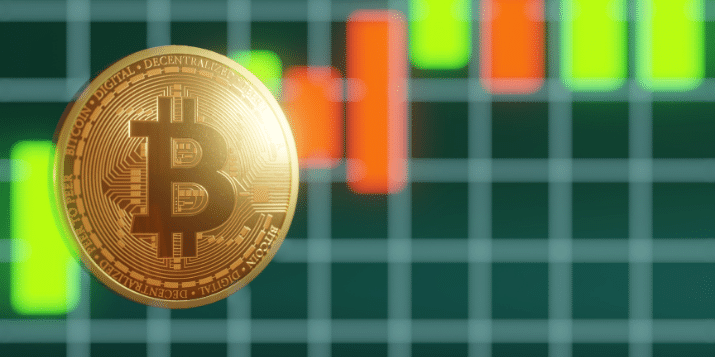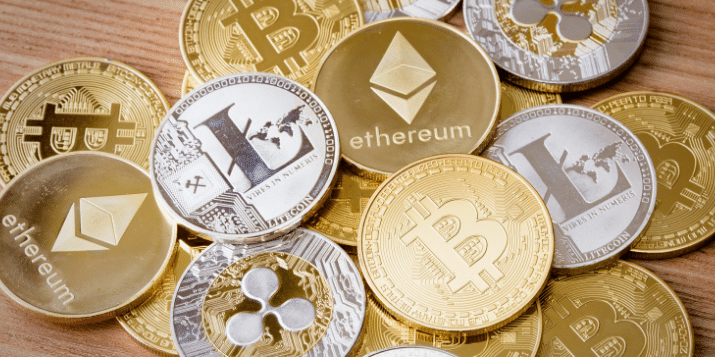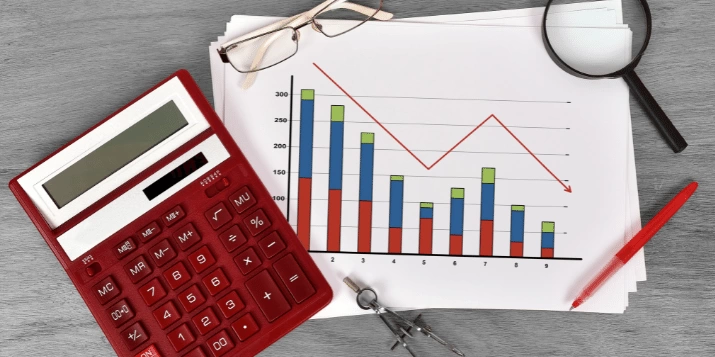
Bitcoin Halving - What Bitcoin’s Buyers Must Know
- Bitcoin Halving Fosters Sustainability
- Halving Implications
- How Can Altcoins Take Over Bitcoin?
- The Circulation of Bitcoin Supply
- Can Certain Altcoins Outperform Bitcoin?
- How the Top 10 Altcoins Do Better Than Bitcoin
- Why Bitcoin Will Still Remain Number One
- Impact on Bitcoin’s Value
- If the BTC Maximum Supply Increases
- If the BTC Maximum Supply Decreases
At the beginning of the Bitcoin evolution, from its inception, the mysterious founder under the alias of Satoshi Nakamoto embedded a key feature into the blockchain. It’s called mining, a process that allows anyone to “earn” BTC in exchange for computer processing power. Thus, it benefits both individuals and the blockchain: people can earn BTC, while Bitcoin can get sufficient capacity to process transactions on its network. Furthermore, the people involved in Bitcoin’s supply chain get rewarded from a process called Bitcoin halving from its mining process.
Bitcoin halving is an event that occurs every four years and has a significant impact on the cryptocurrency market. The last Bitcoin halving occurred last May 2020, which made a good boost of 22% for its investors. This article discusses what Bitcoin halving is, how it impacts the value of Bitcoin, when is the next Bitcoin halving, and the implications for investors who already own Bitcoin or plan to purchase it before the next one happens in 2024. This will help better forecast Bitcoin’s price by 2050.
Bitcoin Halving Fosters Sustainability
There are some nuances to Bitcoin mining, which you can read about here. But in its simplest form, the first miner to successfully solve a cryptographic puzzle and create a new block on the network is rewarded with 50 BTC. But it isn’t sustainable for the network to roll out this reward forever, as only 21 million coins can exist, and a high mining reward would mean a quicker depletion of that supply.

Enter the solution: Bitcoin halving. It’s an event programmed to take place every 210,000 blocks mined, or about every four years. The latest BTC halving event occurred on May 11, 2020. The block reward was reduced from 12.5 to 6.25 BTC per block–a far cry from the 50 BTC reward that miners received in 2009. While the past Bitcoin halving dates indicate the overall supply of the currency in the future, there is truly no exact date of the month for when the event occurs in 2024. But, as of right now, the cryptocurrency Bitcoin halving countdown is already ticking.
Read on if you’re interested in learning about Bitcoin halving – explained for beginners and new investors.
What Happened in May: The Effect on Bitcoin’s Value
Looking at the Bitcoin halving events closely, we can see a trend where halving has correlated with intense boom and bust cycles. Even when the Bitcoin price decreases after the initial boom, it typically ends with higher prices than before the event. This artificial inflation and deflation set the stage for high demand and low supply, which naturally increases the value of Bitcoin.
The total number of Bitcoins that can ever exist, be minted or be mined, is capped at 21 million. This predetermined scarcity is a trend amongst cryptocurrencies and sets them apart from another high-demand investment option, gold, which doesn’t have an exact maximum capacity. Generally, when an asset is a scarce commodity, its value increases. So if gold were to follow the move of halving Bitcoin, you can only imagine how much more valuable it would be.
To illustrate, two months after the most recent of the Bitcoin halving dates, May 20, 2020, BTC went up by over 10%, from $9,700 to over $11,000. By November, it spiked to over $20,000, and it closed the year at $29,000. That’s the most the coin has grown in the last three years, wherein no Bitcoin halving dates were scheduled.
Scarcity reduces the number of Bitcoin in circulation. If this technology did not exist, BTC would be so widely available that it would lose its perceived value, similar to printing hordes of dollar bills. Think of the Bitcoin halving event as synthetic inflation – a guarantee that the coin’s price will increase. Some investors are drawn to Bitcoin trading simply for this reason alone. What happened in May caused the surge of Bitcoin’s price by over triple its original value as 2021 rolled in.
Halving Implications
Impact on Bitcoin Holders
Once Bitcoin reaches the halving stage, there will be a new batch of supply and demand. Investors who purchase Bitcoin before 2020 enjoyed a high return on investment (ROI). Keep in mind that BTC rose to 334% since January 2019, which resulted in a huge migration of investors from the stock exchange into the cryptocurrency space.
As of this writing, BTC price has tripled, reaching an all time high of $64,854 last April 2021. Indicators show that Bitcoin is still in its good trading zone around $44,000 to $52,000, meaning that late investors can still catch up before the next Bitcoin halving.
Bitcoin blocks are mined (or discovered) every 10 minutes. This is part of how the currency sustains itself without a central authority like a bank or government. Currently, there are 25 Bitcoins awarded per block, but when Bitcoin was created, it was designed to halve every four years under what's called the “halvening.” Others casually refer to it as the Bitcoin split.
From here, it will continue to half following the original specification since 2016. This means that there will be fewer new Bitcoins created than originally specified by the rule of "every four years". As Bitcoin mining becomes more difficult, the number of Bitcoins awarded per block will fall. The current estimate is that this process will take approximately 2140 when all Bitcoins have been mined, at which point no further Bitcoins can be created.
Impact on Altcoins
Technically, there will only ever be 21 million Bitcoins in circulation. Halving events happen every four years where the number of new Bitcoins minted for each block of transactions is cut in half. So far, there have been two events, but the next Bitcoin halving will decrease the number of BTC mined per block from 25 to 12.5, decreasing supply and raising demand exponentially.
This might cause a depreciation of different altcoins, especially those which are closely tied with the value of Bitcoin such as the fan-favorite Dogecoin (DOGE) and popular DeFi Chainlink (LINK). The erosion of demand for Bitcoin will make its price fall and make it less valuable.
The Ethereum market cap is predicted to increase after the halving because it is expected to be unaffected by the event. Litecoin has also shown some strength following the news about the halving, it was thought that its supply would not be diminished. If the next Bitcoin split event will still affect the altcoin market, then Bitcoin dominance will remain unscathed. On the other hand, if Bitcoin does not dominate the market, then the likes of Ethereum currency, Cardano coin and Ripple currency may just overthrow Bitcoin’s reign, even just for a short while.
How Can Altcoins Take Over Bitcoin?
Ever since the rise of Bitcoin, more alternatives have surfaced as well. For the longest time, Ethereum has always been the number two of the market - with a promising future when we look at Ethereum price prediction for 2030.
Still, speculators have been defending their statements that Ethereum or Litecoin will take over the crypto space in the future.

If you've been even remotely involved in the world of crypto for any significant amount of time, then you know bitcoin isn't going away anytime soon (or ever).
But bitcoin's dominance doesn't mean it's indestructible. In fact, several altcoins actually have a shot at overtaking bitcoin rather easily—and some already have.
Bitcoin's dominance has slipped over the last year, down from almost 90% to about 40% today. In December 2013 bitcoin represented well over 80% of the cryptocurrency market cap, but now stands below 75%.
But bitcoin still holds an overwhelming lead among cryptocurrencies. And that lead is growing again.
However, bitcoin's growth has been fueled by its use as a payment method, mainly in bitcoin's initial years.
The Circulation of Bitcoin Supply
As bitcoin becomes more popular and its value continues to climb, the number of bitcoin transactions rises. In other words, bitcoin users are turning bitcoin into a store of value rather than spending it on goods and services.
If bitcoin were losing its dominance, it would be a lot easier for altcoins to succeed. But bitcoin is so popular—and still growing in popularity—that it's hard to see bitcoin losing its spot as number one anytime soon.
But bitcoin has one fatal flaw: bitcoin maximum supply.
Bitcoin uses an algorithm that controls bitcoin's release into the market. Once all Bitcoins are released (maximum of 21 million), no more BTC will be produced unless its max supply increases.
Now bitcoin supply is currently outpacing bitcoin demand, but it won't always be that way. Bitcoin creator Satoshi Nakomoto designed bitcoin to mimic the rate of gold production—about 1/7th of new gold coming into supply annually (if bitcoin were even loosely based on a precious metal).
But while bitcoin will grow at a much slower rate than, say bitcoin cash or bitcoin gold, bitcoin still isn't immune to a market takeover.
Can Certain Altcoins Outperform Bitcoin?
The growing demand for bitcoin will eventually outpace bitcoin's controlled release of new coins into the market. As bitcoin's scarcity continues to drive up its value, more investors and users will begin ditching bitcoin in favor of other cryptocurrencies that are inflationary—or at least bitcoin's equal.
Bitcoin isn't going to fall out of favor overnight, though. On the contrary, Bitcoin will likely remain the dominant force in cryptocurrency for years to come…
The maximum bitcoin supply doesn't just limit bitcoin's availability and influence in its own market; it also limits bitcoin's growth potential and ability to compete with other cryptocurrencies.
That bitcoin is limited in its potential to grow hasn't stopped bitcoin from becoming one of the best-performing currencies, assets and commodities out there. But bitcoin's growth will eventually hit a wall—and it will have bitcoin cash, bitcoin gold and other cryptocurrencies to thank for speeding up that process.
How the Top 10 Altcoins Do Better Than Bitcoin
In other words, it will take some time before other currencies can “take over” BTC. Remember the Dogecoin hype last January to April 2021 when the price rallied more than 1000%? That was because everyone was riding on the hype after Tesla CEO Elon Musk has been constantly tweeting about the joke coin. However, it has never become a joke ever since plenty of DOGE investors managed to rake in huge profits. Yet, even if the price significantly increased, it is nothing more than just a faux Bitcoin. Some may say that it will topple BTC in the future. Some speculate that DOGE alternatives such as Shiba Inu (SHIB) may even do better than its predecessor. However, while that is possible, businesses will have to take the coin seriously, especially the mega-corporations. Ironically, it was through his announcement about Tesla suspending the acceptance of Bitcoin that the entire crypto market crashed by half on May 19, 2021.

If there is one strong contender that may be the number one crypto soon, it would have to be Ethereum simply because of its real-use case, more convenient transactions than BTC and the application of non-fungible tokens (NFT). Moreover, with the recent trend of NFTs both in arts and video games, Ethereum has helped make other tokens possible thanks to its decentralized technology and high-value digital assets.
The second contender may just be Cardano, but it acts more like Ethereum than Bitcoin with its more decentralized system and more transparency in its transactions.
Will we see a new coin dominance in the next five years? That is up to society to decide. If the majority of people - especially those with high power - find that other coins are better than Bitcoin, then the BTC reign will surely tone down. However, as new people come to flock into the cryptocurrency market, many still deem Bitcoin as the top coin above all else. Furthermore, with the acceptance of Bitcoin as legal tender in El Salvador, large companies like Amazon, Apple and Facebook accepting Bitcoin and more proof that BTC uses less consumption, there is still room to grow for the world’s number one cryptocurrency, which is why Bitcoin dominance will keep on going for at least the next ten years.
Why Bitcoin Will Still Remain Number One
As the halving of Bitcoin continues, there will always be a consistent demand for BTC. By 2024, a higher percentage of businesses would finally use Bitcoin as a primary tender for transactions. At the same time, as mining BTC becomes more scarce, the value goes higher. Its state is almost the same as the gold rush of the 20th century, except the mining here comprises complex equations and computers. Ethereum could be the most plausible coin that may take over Bitcoin but it won’t get to the number one spot as long as its direct competitor keeps evolving for the benefit of the world and for the majority of society to finally see Bitcoin as more valuable than the dollar bill.
Impact on Bitcoin’s Value
Whenever Bitcoin halves, it causes a major correction in the market that can significantly lower the price of just about every available cryptocurrency. Taking a look back at Bitcoin’s halving in May 2020, it went into a correction starting May 8 until May 11. It went from a high closure of $9,986 down to $8,200. However, BTC bounced up for several days to $9,733 until it went back into a correction for a whole week before May 27. On June 1, 2020, it hit $10,380 before it spiralled into another downtrend.
While it was not purely due to halving, keep in mind that this was the time when the pandemic started spreading across the globe, causing massive fluctuations in all forms of the market.
But, as investors would say, “buy the dip”. When Bitcoin was floating around the $8,500 to $9,100 area during the whole month of June till the third week of July, the bulls started storming in and rushed the price of BTC, breaking its crucial resistance area and making records on hitting the $12,000 area. As of September 2021, BTC price has hit a local top of $52,920 until it hit another correction following the news of El Salvador now using Bitcoin as legal tender.
While it is still early before the next halving and the bulls keep on buying, it is just about anyone’s game. It is a possibility that Bitcoin may just hit new records of $100,000 or even down to new lows of $10,000.
The halving of Bitcoin is both an opportunity and a headache, depending on your stance on cryptocurrency. Of course, if you buy BTC right before the 2024 halving, you will definitely find your portfolio at a loss since the halving will cause a huge adoption. By that time, new buyers will roll in to buy BTC at a good discount.
If the BTC Maximum Supply Increases
There is a possibility that Bitcoin's maximum supply will increase in the future if Bitcoin becomes a global currency and replaces other forms of currency as well as credit cards. If Bitcoin is globally accepted by society and Bitcoin's ease of use, it could possibly replace the US dollar. If Bitcoin was to become a global currency there would be no need for Bitcoin to have its maximum supply increased due to Bitcoin being used in every country around the world. The Bitcoin market cap will continue to grow instead of decrease like Bitcoin's market cap as Bitcoin is being adopted by society. It is possible Bitcoin will reach a new all-time high in 2022 for Bitcoin to have a maximum supply of 100,000,000 instead of 21,000,000.
If the BTC Maximum Supply Decreases
Contrastingly, there is a possibility that Bitcoin's maximum supply will decrease in the future. This will most likely happen if Bitcoin is not adopted by society and Bitcoin is seen as a scam or bubble that is ready to burst. There are other factors that Bitcoin might decrease in value including Bitcoin's price, Bitcoin's transaction speed, and the amount of mined Bitcoins per day. If the BTC market cap continuously decreases, then it would hit back around $7.2 billion, especially if the news will constantly show negativity about cryptocurrency. In conclusion, Bitcoin may just reach new lows in 2022 for Bitcoin to have a maximum supply of 5,000,000 instead of 21,000,000.

Would this mean that the entire crypto market reduces as well? If the investors are looking at other coins instead, then this will mark the end of Bitcoin’s direct influence on all coins, allowing the altcoin market to rise. If BTC cannot maintain its dominance, then perhaps its runner-ups including ETH, ADA, LTC and even DOGE may become the new influencers of the market.
Earlier, we brushed on BTC mining, a process in which people participate in Bitcoin's blockchain network as a transaction validator or processor. Miners need to give time, energy, and financial investment to run powerful computer hardware and solve complex equations in a process called Proof of Work. As a result, it’s important to incentivize them with a BTC reward. That’s how BTC can be earned and obtained outside of exchanges.
While the Bitcoin halving event reduces the block reward – cutting off miners’ earnings – the price increase expected to follow mitigates the downsides. So even though the number of coins they receive is cut in half, the Bitcoin price increase makes up for the difference in value.
Bitcoin halving is a much-hyped and anticipated moment in the cryptocurrency world. This event is used, alongside other factors, for analysts to determine the Bitcoin price prediction in the long-term. There are more Bitcoin halving dates to look forward to in the future, with the last being in the year 2140, when the last BTC is expected to be mined. In the meantime, just think of the Bitcoin halving event as an indicator of the coin’s value.
Final Words
Bitcoin halving is a necessity for BTC to grow even more. This is beneficial for miners and investors alike since there will be more supply and demand opportunities. Once businesses from all over the world decide to use Bitcoin as one of the primary sources of transactions, the maximum supply of BTC will increase as well as the market cap. Before you ask “When is Bitcoin halving again,” consider the following: If Bitcoin cannot get improvements in its technology such as lesser energy consumption and lower gas fees, it could mean the end of its dominance. When Bitcoin dominance fails, other coins with better technology may just become the bigger influence. Its direct competitors such as Ethereum, Cardano, Litecoin currency, Ripple and even Dogecoin currency may topple BTC.






Leave a Reply
Add comment ×